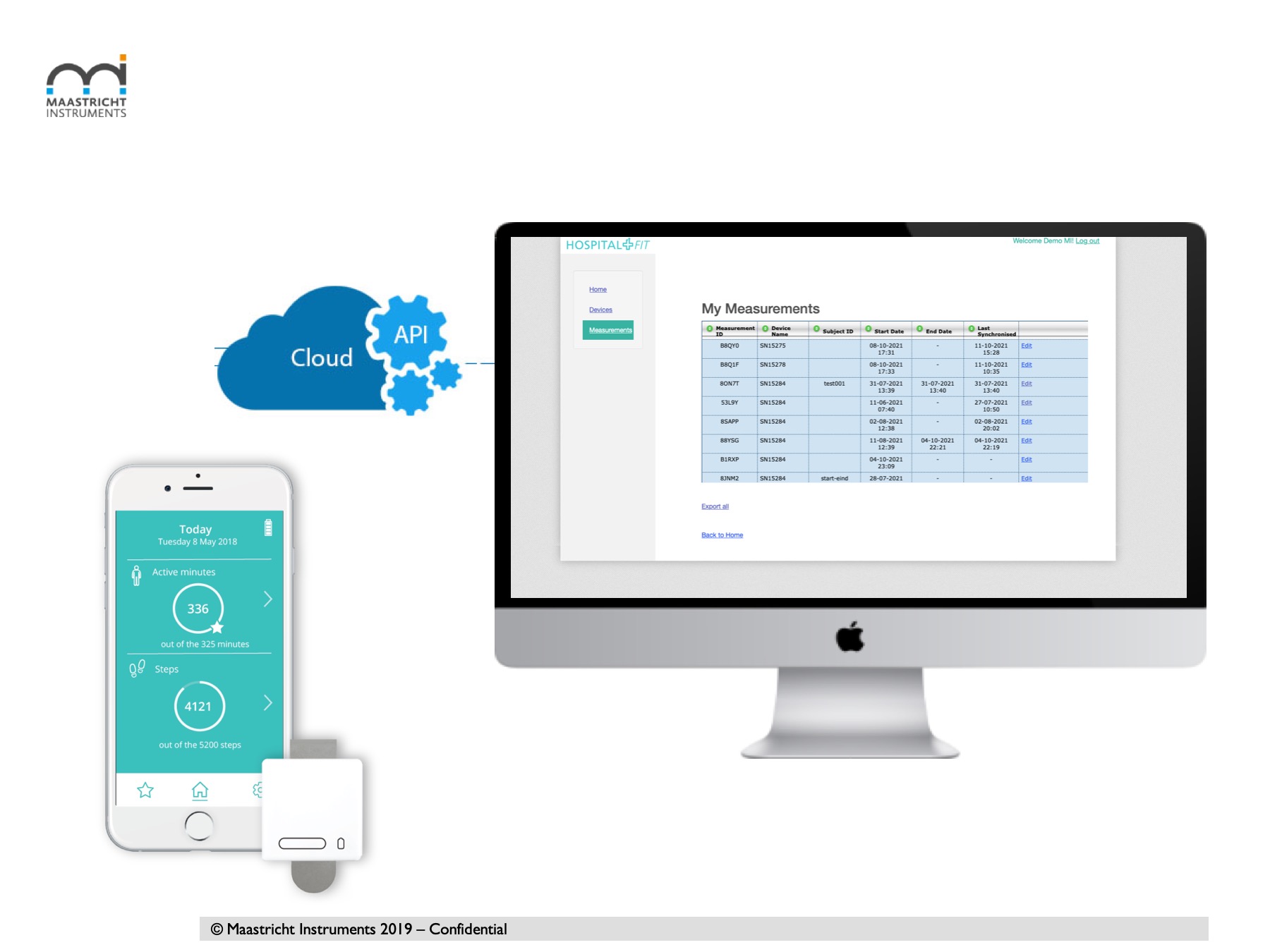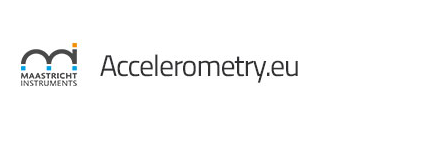The MI data portal / online database is available for cloud-based collection and storage of measurement data. The apps Hospital Fit and Miss Activity can connect to the data portal.
 Key features:
Key features:
- Measurement metadata:
- Start – end time of each measurement
- Unique measurement ID
- User generated identifier / Subject ID
- Study ID
- Measurement summaries:
- Total time measured
- Summaries / calculations based on each measurement
- Data download
- Study data
- Measurement data
- Extensive user management:
- Roles & access rights
- Membership roles
- Interfacing
- API available for connectivity to 3rd party data platforms / EHR / EPD
- Can be connected to Loot study workflow software
- Logistics support
- Devices available / in use
- Data available / last synchronisation
Quality certifications / Data security and integrity:
- Maastricht Instruments is ISO9001 and ISO13485 certified.
- All data is stored in a NEN-7510 certified environment.
- All data is backed up daily and hourly, backups are stored in a physically different location
- A Data Processing Agreement is in place with all parties to ensure the privacy of all subjects stored in the database.
- Personal data is stored separately from research data, in line with the Dutch privacy law WBP and the European GDPR as well as the GCP guidelines.
- All data managers are GCP-certified and are bound to a vow of secrecy. If desired, a project specific vow of secrecy may be drawn up.
- All software is secured by strict user management. All passwords are encrypted with multiple encryption methods (multiple MD5 and SHA256 hashes, as well as salted)
- All application users are bound to a certain membership role. A user can furthermore be bound to a specific location or study center, to ensure that this user does not have access to other location or study center data; for example, in a multicenter study performed within two hospitals, a user appointed to the first hospital will not see personal data of patients enrolled in the second hospital.
- All applications can only be reached over a secured Hypertext Transfer Protocol
- Secure connection (HTTPS). This means that all data that are exchanged between the clients and the server will be sent encrypted over the Internet. In order to block access from unauthorized locations, application access can be restricted to specific
- Internet Protocol addresses (IP-addresses; a way to identify the location of the web device connecting to the web application).
